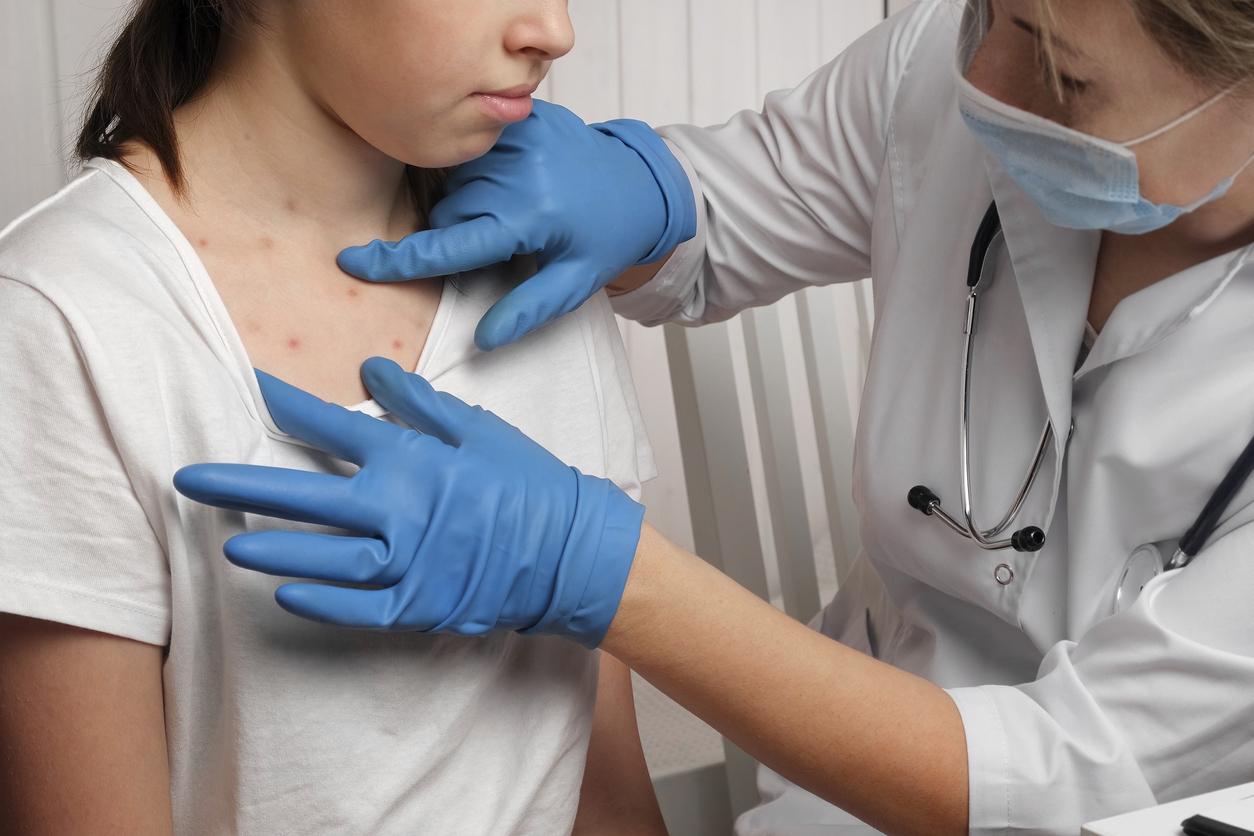SUMMARY :
- Severe childhood hepatitis: what symptoms?
- Unknown childhood hepatitis: how many cases in France?
- Unknown childhood hepatitis: what do we know about the link with Covid-19?
- Severe hepatitis: what are the possible causes?
Hepatitis of unknown origin in children : what to remember, the latest info as of May 20, 2022.
- Near 450 children are now affected by acute hepatitis of unknown originthis disease which has been occurring since the end of March in children under 10 years of age.
- The cases of infantile hepatitis would be linked to a adenovirus (transmitted by the fecal-oral or respiratory route), causing intestinal symptoms such as vomiting and diarrhea. But no agency has at this stage been able to confirm the definitive cause of the cases.
- The Covid-19 track seems to be confirmed. According to one study researchers from Case Western Reserve University in the United States, Covid-19 could be one of the causes explaining these mysterious cases, in particular because Covid-19 would lead to an increase in the concentration of several liver enzymes in the blood.
- In China, the General Administration of Customs has announced that it is strengthening its medical checks at borders to prevent the introduction of acute hepatitis among children. “Passengers, especially children, with symptoms such as abdominal pain, diarrhea, vomiting and jaundice, who voluntarily report or are found at the scene, should undergo medical inspection in accordance with prescribed procedures,” the report said. GlobalTimesmedia affiliated with the Chinese authorities.
- In the United States where a survey by the Centers for Disease Control and Prevention (CDC) is conducted, concern mounts after the detection of 109 cases of childhood hepatitis of unknown origin, having caused the death of 5 children in the country. Dr. Jay Butler, deputy director of infectious diseases at the CDC, said in a May 6 press conference that most of the children have made full recoveries. But more than 90% were hospitalized, 14% received liver transplants and more than half had adenovirus infections. That said, the actual number of hepatitis cases in the United States does not exceed the usual number observed. As this same American specialist pointed out, “It is important to remember that severe hepatitis in children is rareeven with the potential increase in cases we are reporting today.”
- the UK for its part, it is investigating a much higher number – more than 160 cases –.
- On April 28, 2022, the European Diseases Agency (ECDC) classified as “public health event of concern“these unexplained cases of hepatitis.”The disease is quite rare and evidence of human-to-human transmission remains unclear. Cases in the European Union are sporadic with an unclear trend“, clarified the ECDC. The risk for children in Europe “cannot be accurately estimated“, according to the agency.”Nevertheless, considering the reported cases of acute liver failure, with cases requiring transplantation, the potential impact for the pediatric population is considered high..”
Severe childhood hepatitis: what symptoms?
Those severe hepatitis mainly concern children under 10 years old. Symptoms of these severe liver inflammations include, according to a statement from the UK Health Safety Agency (UKHSA):
- “dark urine
- pale, gray stools
- itchy skin,
- yellowing of the eyes and skin,
- nausea,
- muscle and joint pain,
- a high temperature,
- abnormal tiredness,
- loss of appetite
- and stomach aches“.
Unknown childhood hepatitis: how many cases in France?
In France, “two cases of acute hepatitis whose etiology is still undetermined have been reported by the Lyon University Hospital” in children under 10 years of age and “are under investigation”said the Public Health France agency, interviewed by Agence France-Presse (AFP).
The health authorities nevertheless want to be reassuring: “cases of acute hepatitis of undetermined etiology in children are not uncommon. The occurrence of these two cases is not unexpected and does not, at this stage, indicate an excess of cases in France. Given the active search for cases that has been launched by the health authorities, other reports are likely to be expected in the coming days.“.
Unknown childhood hepatitis: what do we know about the link with Covid-19?
If several studies had already confirmed a link between Covid-19 and elevations in the concentration of certain enzymes in the blood, a new study carried out by researchers from Case Western Reserve University confirms this hypothesis. The researchers compared two groups of children: 245,000 having contracted Covid and 550,000 with other respiratory infections. They found that the hepatic risk was higher in the Covid cohort, in particular because of the excess of ALT and AST enzymes and biliurine, the pigment responsible for jaundice in hepatitis. The risk remained increased up to six months after infection, which “suggests acute and long-term hepatic sequelae in pediatric Covid-19 patients”.
Normally without consequences, these liver damage can be serious, even in children without liver disease. A other study published in the Journal of Pediatric Gastroenterology and Nutrition highlighted the case of a 3-year-old girl who, after having a mild form of Covid-19, developed hepatitis of autoimmune origin.
On their side, in a joint bulletin published on May 13, the WHO and the European Center for Disease Prevention and Control (ECDC) revealed that of 173 cases tested by PCR for Covid-19, 20 were found to be positive, or 11.6%. Serology results were only available for 19 cases, of which 14 (73.7%) were found to be positive. Finally, of the 56 cases with data on vaccination, 47 were not vaccinated, i.e. more than 80%.
Severe hepatitis: what are the possible causes?
According to the European Center for Disease Prevention and Control, “an infectious cause is most likely due to the clinical and epidemiological characteristics of case“. If it is not hepatitis A, B or C (since the HAV, HBV and HCV viruses have not been identified in any sick child), it could be a question of an infection by an adenovirus, according to the latest assumptions. Remember that there are about fifty adenoviruses, immunologically distinct, and generally responsible for more severe colds or respiratory infections.
Thereby, I’adenovirus AD-41 could be at the origin of this mysterious epidemic: “AD-41 usually causes a gastroenteritis-like illness in children, with vomiting and diarrhea. It is not known to cause hepatitis. That said, there may be something slightly different about this virus in 2022.explained Prof. John Irving, specialist in microbiology and infectious diseases at the University of Nottingham to our colleagues at Science and Future. The affected children, mostly between the ages of 3 and 6, have just spent 2 years being heavily isolated and therefore not exposed to the usual range of childhood infections, and the sudden exit from confinement has led to an upsurge in infections.“
Adenovirus has been detected in more than 70% of cases in the UK and mainly in blood, theUK Health Safety Agency (UKHSA).
According to the WHO, which published a report on April 23, there are at this stage 3 causes considered:
- increased sensitivity in young children following a lower level of circulation of the adenovirus during the pandemic of Covid-19. In short, their immune system would be less effective because it was put on hold for several months.
- the potential emergence of a new adenovirus,
- the SARS-CoV-2 co-infection. In effect, SARS-CoV-2 has been detected in 18% of cases in the UK.
Unfortunately, to date, “detailed information collected through a case questionnaire regarding food, drink and personal habits did not identify any common exposures“concludes the ECDC. In addition, the British authorities point out that children affected in the United Kingdom are not vaccinated against Covid-19: these hepatitis therefore probably have nothing to do with vaccination.
The World Health Organization also said the “vast majority” of children were unvaccinated in the cases it reviewed.
So the mystery remains. “We have already seen adenoviruses cause hepatitis in immunocompromised populations. But several questions remain: ‘Why now?’ and ‘why in the context of some countries, and not others?, pointed out to here.radio-canadaCanadian infectious disease specialist Dr. Zain Chagla on global investigations into this mysterious outbreak. Is there a co-factor, like a toxin, or genetic factors, or another infection like COVID-19, that might be involved in all of this?”
In IsraelDr. Yael Mozer Glassberg, Head of the Liver Transplant Unit at the Schneider Children’s Medical Centerwhich did not find any huge leap in the number of cases, however, told CBC News that each of the cases examined by his team had contracted Covid-19 (after taking serological tests). Conversely, no child had received a positive adenovirus test result. “I can’t say it’s the same as what’s happening right now elsewhere in the world. But we have had seven specific cases like this and an eighth person is hospitalized at the moment.” “Maybe it’s a new virus. Maybe it’s not the adenovirus. Maybe it’s not even caused by COVID-19. Maybe it’s is a combination of the two, concludes this specialist.
For now, the ECDC recommends reinforcing good hygiene practices with the “cleaning of hands and surfaces in places frequented by young children“.
Sources:
- CDC Is Investigating 109 Cases of Hepatitis in Children, Including 5 Deaths, New York Times, May 6, 2022
- Hepatitis of unknown origin in childrenECDC, 19 April 2022
- Multi-Country – Acute, severe hepatitis of unknown origin in children, WHO, 23 April 2022
- Joint ECDC-WHO regional office for Europe hepatitis of unknown origin in children surveillance bulletin, 13 May 2022
Read also:
- Hepatitis C: find the last patients and cure them!
- Hepatitis C in 12 true/false
- Screening for liver disease: it should be systematic

















